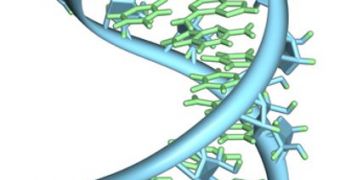In a recent study conducted on small RNA molecules called microRNA, experts in Heidelberg, Germany, determined that the last common ancestor humans and worms shared have a sophisticated brain. The animal roamed the world's seas more than 600 million years ago.
Experts at the European Molecular Biology Laboratory (EMBL) say that the study – which was focused on molecules that have the ability to regulate gene expression – evidenced a brain capable of releasing complex hormones into the blood stream.
At the same time, the neural center was connected to a variety of sensory organs on the surface of the creature. These traits were until now believed to have evolved much later. Thus far, the team recovered no fossils that may substantiate their claim.
It is entirely possible that they will never find one either, given that the chance of fossils having formed from such a creature are tremendously remote. Still, they are left with the theoretical experiment, which appears to stand to scrutiny, Daily Galaxy reports.
Researchers were able to identify microRNA in sea anemones, worms, and humans, among other species. What this implies is that all these animals had a common ancestor during the course of their evolution. Given the differences between them, the ancestor must have lived a long time ago.
Evolutionarily speaking, species tend to develop their own sets of microRNA molecules. However, they also carry ones that developed in their common ancestor with other species. It's the latter category that researchers focused on.
In their study, they focused on the marine annelid Platynereis dumerilii, which only changed minimally over the past 600 million years. It stayed largely the same because it had no incentive to evolve. By analyzing its microRNA, the group determined that the organism's ancestor had the molecules too.
By extrapolating their findings to other species as well, the researchers were able to understand the last common ancestor of all these animals better. The research effort was led by EMBL expert Detlev Arendt.
“By looking at where in the body different microRNAs evolved, we can build a picture of ancestors for which we have no fossils, and uncover traits that fossils simply cannot show us,” he explains.
“But uncovering where these ancient microRNAs are expressed in animals from different branches of the evolutionary tree has so far been very challenging,” he goes on to say.
“We found that annelids such as Platynereis and vertebrates such as ourselves share some microRNA that are specific to the parts of the central nervous system that secrete hormones into the blood, and others that are restricted to other parts of the central or peripheral nervous systems, or to gut or musculature,” adds Foteini Christodoulou.
The expert was responsible for carrying out most of the experimental work associated with the new study.
“This means that our last common ancestor already had all these structures,” he concludes.

 14 DAY TRIAL //
14 DAY TRIAL //